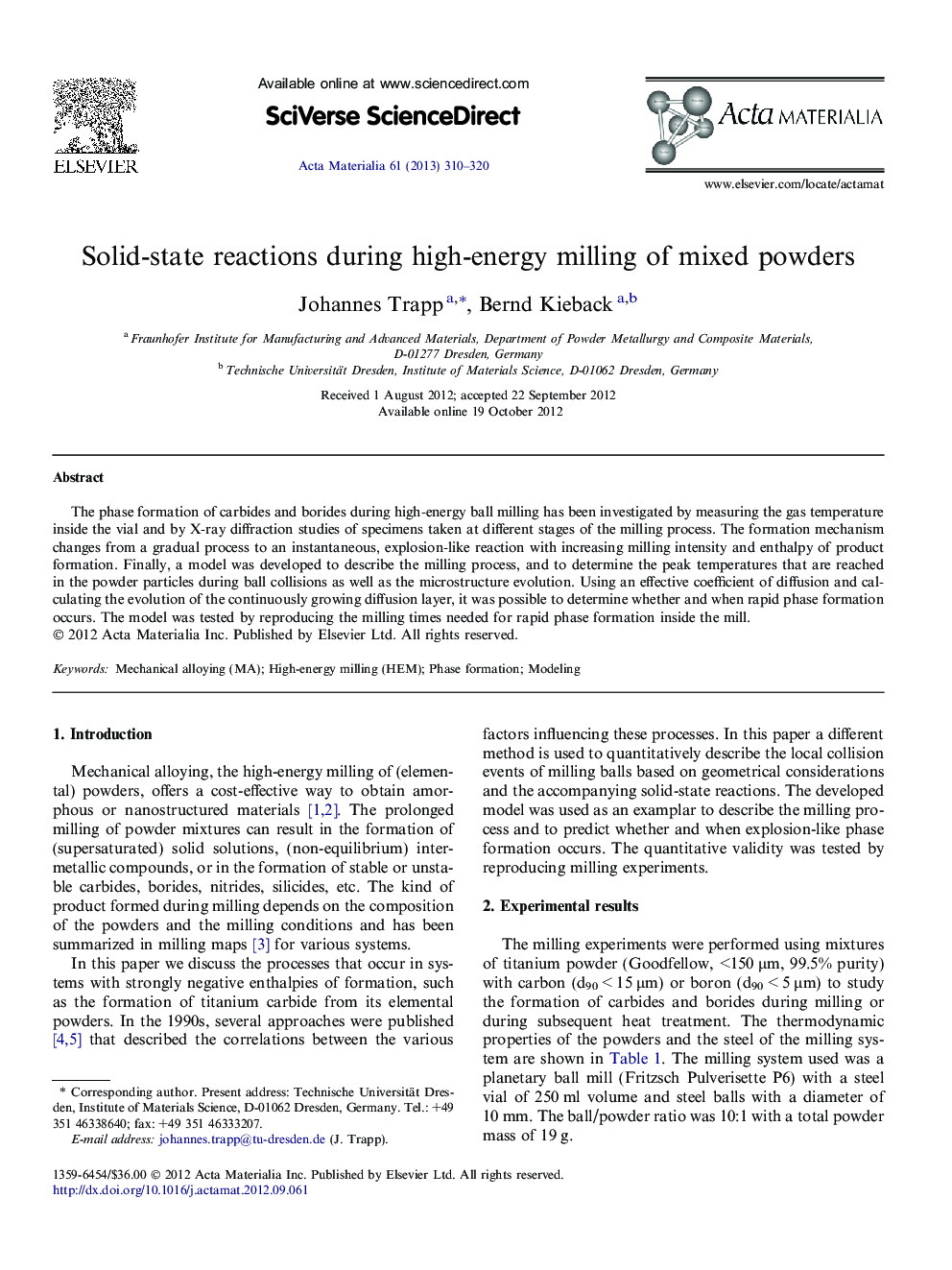| Article ID | Journal | Published Year | Pages | File Type |
|---|---|---|---|---|
| 10620329 | Acta Materialia | 2013 | 11 Pages |
Abstract
The phase formation of carbides and borides during high-energy ball milling has been investigated by measuring the gas temperature inside the vial and by X-ray diffraction studies of specimens taken at different stages of the milling process. The formation mechanism changes from a gradual process to an instantaneous, explosion-like reaction with increasing milling intensity and enthalpy of product formation. Finally, a model was developed to describe the milling process, and to determine the peak temperatures that are reached in the powder particles during ball collisions as well as the microstructure evolution. Using an effective coefficient of diffusion and calculating the evolution of the continuously growing diffusion layer, it was possible to determine whether and when rapid phase formation occurs. The model was tested by reproducing the milling times needed for rapid phase formation inside the mill.
Related Topics
Physical Sciences and Engineering
Materials Science
Ceramics and Composites
Authors
Johannes Trapp, Bernd Kieback,
